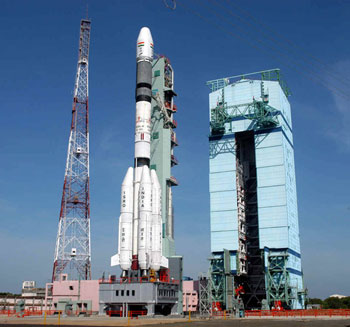 Launch Facilities in Indian Space Research Organisation (ISRO) is part of one of the most important activities. It was essential to provide the necessary infrastructure for launching satellites in the low earth orbit, polar orbit and geostationary transfer orbit. Launching facilities include infrastructural amenities for vehicle assembly, fuelling, checkout and launch operation. It also provides facilities for launching sounding rockets which shall help to study the earth`s atmosphere. Overall ISRO within its launching facilities provides two types of launching pads, four rocket launching centres and a number of satellite launching vehicles.
Launch Facilities in Indian Space Research Organisation (ISRO) is part of one of the most important activities. It was essential to provide the necessary infrastructure for launching satellites in the low earth orbit, polar orbit and geostationary transfer orbit. Launching facilities include infrastructural amenities for vehicle assembly, fuelling, checkout and launch operation. It also provides facilities for launching sounding rockets which shall help to study the earth`s atmosphere. Overall ISRO within its launching facilities provides two types of launching pads, four rocket launching centres and a number of satellite launching vehicles.
Launch Facilities in ISRO begins with the initial checking up of the spacecraft and its subsystems before it is sent to the launching pad for integration. The launching facilities include the vigorous steps which are involved in integrating a spacecraft. To begin with it requires a tall Mobile Service tower with foldable working platforms that provides accessibility to it at every level of elevation. This MST helps to place the spacecraft vertically. Once placed vertically the spacecraft is integrated to the vehicle in a clean room which is set up inside the MST. In case of GSLV it is further integrated with a payload adopter and then encapsulated in the heat shield during the preparation facility itself. After this the encapsulated spacecraft is then placed in the launching pad for integrating the 3rd stage of GSLV. Within the launching facilities it further checks the level of liquid propellants and high pressure gases, checkout cables and chilled air duct for supplying cool air to the satellite and the equipment bay.
Launching Facilities in ISRO after constructing the first launch pad was busy in constructing a second launching pad which shall not only include the present facilities but also include provisions for more advanced launch vehicle configuration which are supposed to come in near future. It was constructed with aim to include not only the PSLVs and GSLVs but also GSLV-MkIII. Within this the process of integration which includes the transfer and launch concept along with other type of facilities are associated and designed and the entire vehicle is assembled and checked -out on the mobile pedestal which is called Vehicle Assembly Building and then placed on the launch pad vertically on a roll track. This makes the spacecraft more comprehensive.
Launching Facilities in ISRO includes some more facilities like Solid Stage Assembly Building connected to the Vehicle Assembly Building by a rail track, Technical Complex -2 (TC2), Spacecraft Preparatory Facilities, Range Instrumentation Facilities comprising of tracking, telemetry and tele-command systems. Along with this launching facilities include four launching facilities which are located in Bangalore, Andhra Pradesh, Thiruvananthapuram and Thumba. Launching facilities further include a number of Satellite launching vehicles which have been India`s biggest achievement in space technology. The race began with the launching of SLVs which was further developed into ASLVs, GSLVs and will be further developed into GSLV-Mk I, II, and III. Among this Polar Satellite Launch Vehicle which is popularly known as PSLV was India`s first effort to design and develop a operational vehicle that can be used to orbit application satellite.A PSLV is capable of launching a satellite weighing 1600kg which can be launched up to 620 km sun synchronous polar orbit and1050 kg satellite in geo-synchronous transfer orbit.
Thus it can be said that the launching facilities which are provided by ISRO include the facilities required to check the requirements of a Satellite Launching Vehicle before it is placed on the launch pad. This includes the amenities like Tall Mobile towers and vehicle assembly building which has been newly introduced within space technology.




















